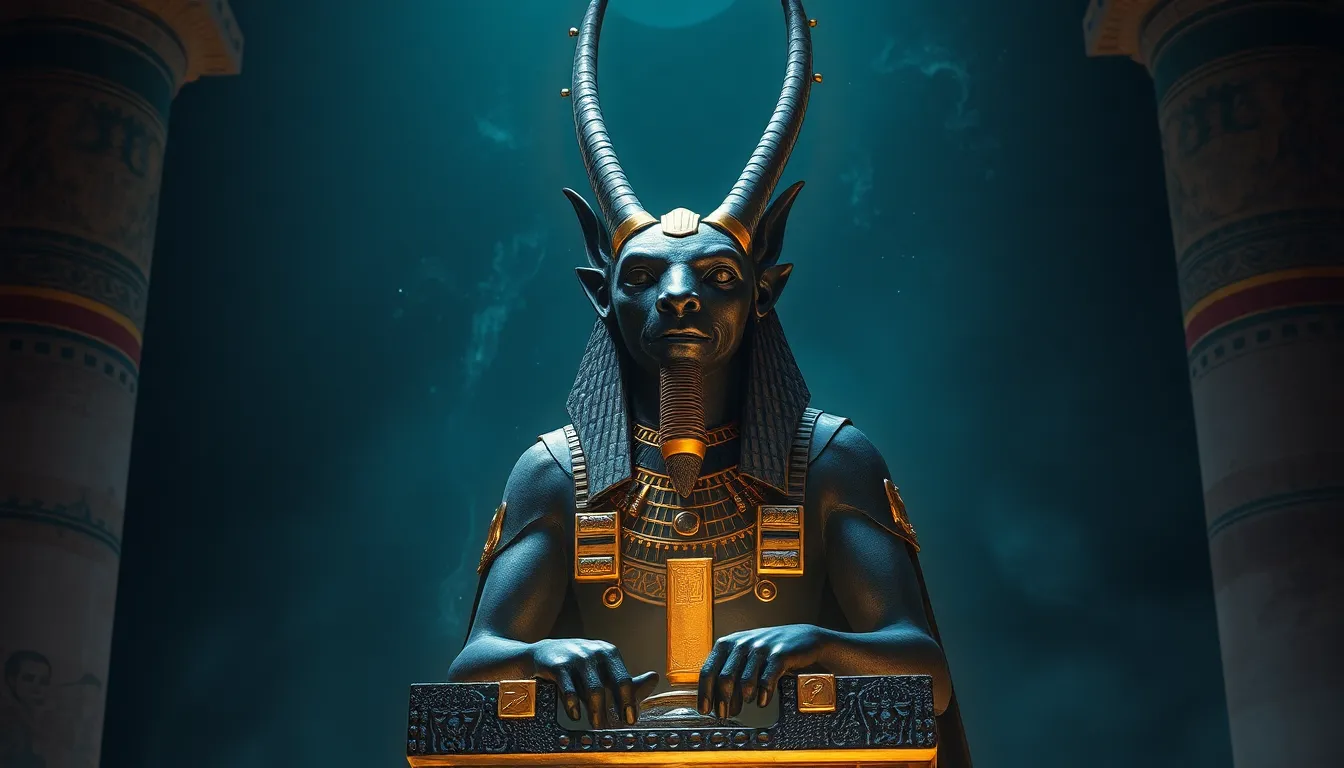Anubis: The Guardian of the Afterlife and Divine Judgment
I. Introduction
Anubis is one of the most recognizable deities in ancient Egyptian religion, often depicted as a jackal or a man with a jackal’s head. His significance lies primarily in his role as the guardian of the afterlife and a guide for souls navigating the journey beyond death. Anubis’s presence is felt deeply in the context of funerary practices, mummification, and the divine judgment that determines the fate of the deceased.
The purpose of this article is to explore the multifaceted role of Anubis in ancient Egyptian mythology, from his historical origins to his modern interpretations. We will delve into his iconography, his function in the afterlife, and his lasting legacy in contemporary culture.
II. The Historical Context of Anubis
Anubis’s origins can be traced back to the earliest periods of Egyptian history, likely emerging during the pre-dynastic period. Initially regarded as a god associated with burial and funerary rites, Anubis evolved to encompass a broader role in the afterlife.
His primary role in funerary practices involved overseeing the mummification process and ensuring that the deceased were prepared for the afterlife. In comparison to other deities of the afterlife across different cultures, Anubis stands out as a protector and guide, a role that resonates with various mythologies worldwide, such as Charon in Greek mythology and Osiris, who judged the dead.
III. Iconography and Symbolism
Anubis is typically depicted with a black jackal’s head, symbolizing the color of the fertile soil of the Nile and the concept of rebirth. His human form often emphasizes his divine nature, and he is frequently shown holding a sistrum or ankh, signifying life and protection.
- Jackal Form: Represents his connection to the dead and the desert, where jackals were often seen scavenging.
- Black Color: Symbolizes regeneration, fertility, and the afterlife.
- Artifacts: Anubis is often seen with tools used in mummification, highlighting his role in preparing souls for their journey.
Artistic representations of Anubis can be found in tombs, temples, and burial artifacts, showcasing the reverence ancient Egyptians held for him. These depictions often include scenes of the mummification process and the Weighing of the Heart ceremony, where Anubis plays a pivotal role.
IV. Anubis’s Role in the Afterlife
The mummification process was critical in ancient Egyptian beliefs about the afterlife. Anubis was intimately involved in this sacred ritual, ensuring that the body was preserved for the soul’s journey. The careful embalming and wrapping of the body were essential for protecting the deceased from decay and ensuring their safe passage to the afterlife.
The Weighing of the Heart Ceremony
This ceremony, a central theme in ancient Egyptian funerary beliefs, involved weighing the heart of the deceased against the feather of Ma’at, the goddess representing truth and justice. Anubis was responsible for guiding the soul to this critical moment of judgment.
- Description of the ceremony: The heart, believed to be the seat of emotion and thought, was placed on one side of a scale, while the feather was placed on the other.
- Significance of the heart: If the heart was lighter than the feather, the soul was deemed virtuous and could proceed to the Field of Reeds; if heavier, it was devoured by Ammit, the devourer of souls.
V. Divine Judgment and Protection
Anubis serves as the protector of souls during their transition from the mortal realm to the afterlife. His role in maintaining the balance of Ma’at is critical, as he ensures that the judgment process is fair and just.
The weighing of the heart is not merely a test; it reflects the ancient Egyptians’ belief in personal responsibility and moral conduct. Anubis’s guidance helps souls navigate this process, reinforcing the importance of living a life aligned with truth and order.
VI. Anubis in Ancient Texts and Inscriptions
References to Anubis abound in ancient Egyptian literature. His presence is prominently featured in the Pyramid Texts and Coffin Texts, where he is invoked for protection and guidance.
In the Book of the Dead, Anubis is portrayed as a key figure in the judgment of the dead, emphasizing his role as a mediator between the living and the dead. His depictions in these texts reveal the deep-seated beliefs of the ancient Egyptians regarding life, death, and the afterlife.
VII. Modern Interpretations and Cultural Impact
Anubis has made a significant impact on contemporary culture, appearing in various forms of media, including films, literature, and video games. His character often embodies themes of death, mystery, and the afterlife, captivating the imagination of audiences worldwide.
The resurgence of interest in ancient Egyptian mythology has led to Anubis becoming a symbol of intrigue for many. He is often referenced in modern spiritual practices that seek to understand the mysteries of existence and the afterlife.
VIII. Conclusion
Anubis remains a vital figure in both ancient and modern contexts, symbolizing the complex relationship between life, death, and the afterlife. His role as the guardian of the dead and the divine judge of souls underscores the ancient Egyptians’ profound understanding of morality and the human experience.
Reflecting on Anubis’s legacy invites us to consider our own beliefs about life and death, morality, and the nature of existence. As we navigate our paths in today’s society, the principles of divine judgment and personal accountability continue to resonate, reminding us of the timeless truths that Anubis embodies.




